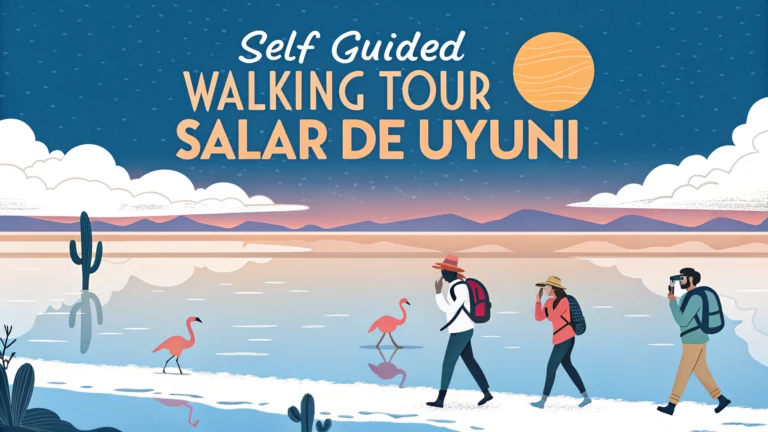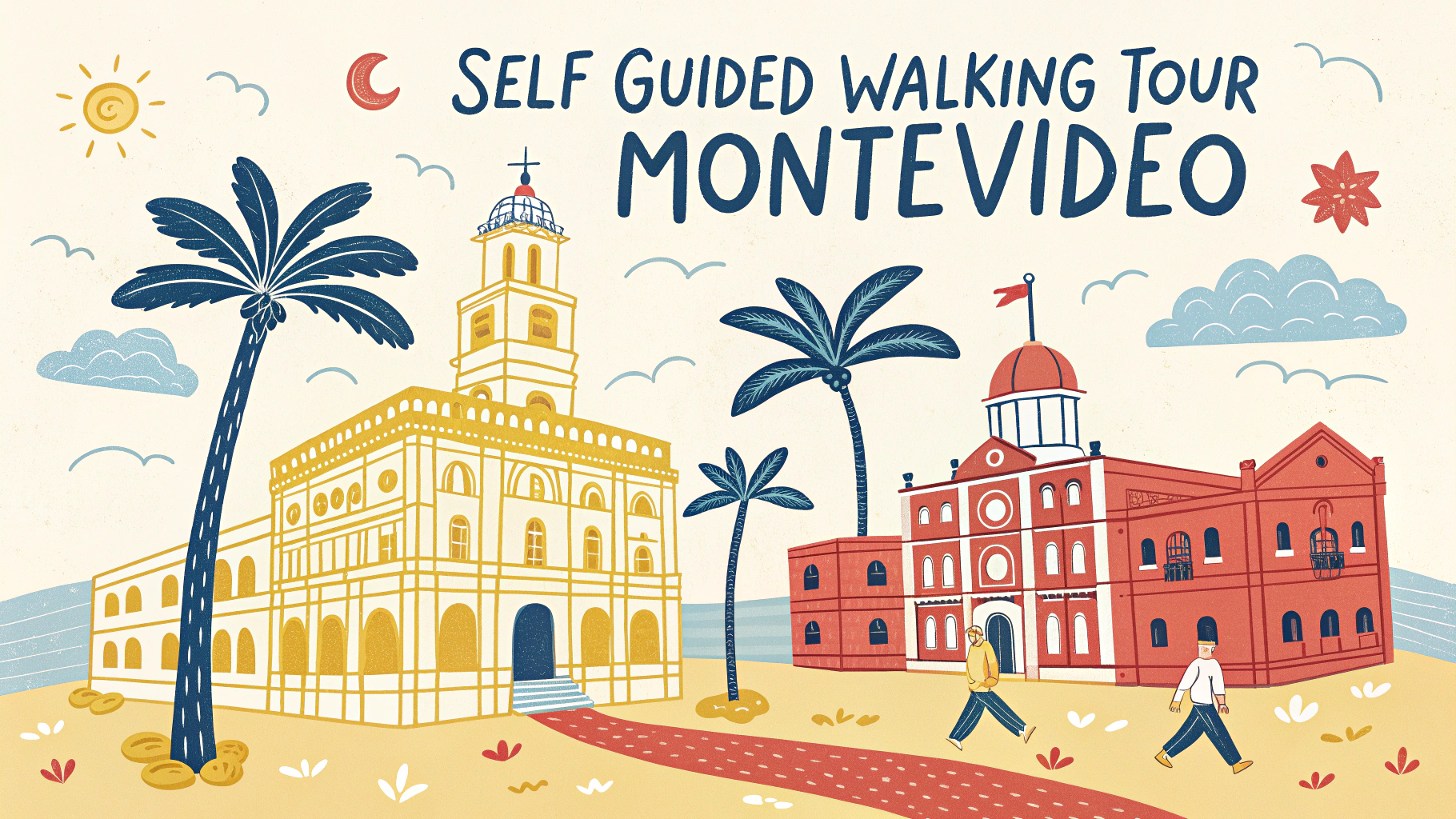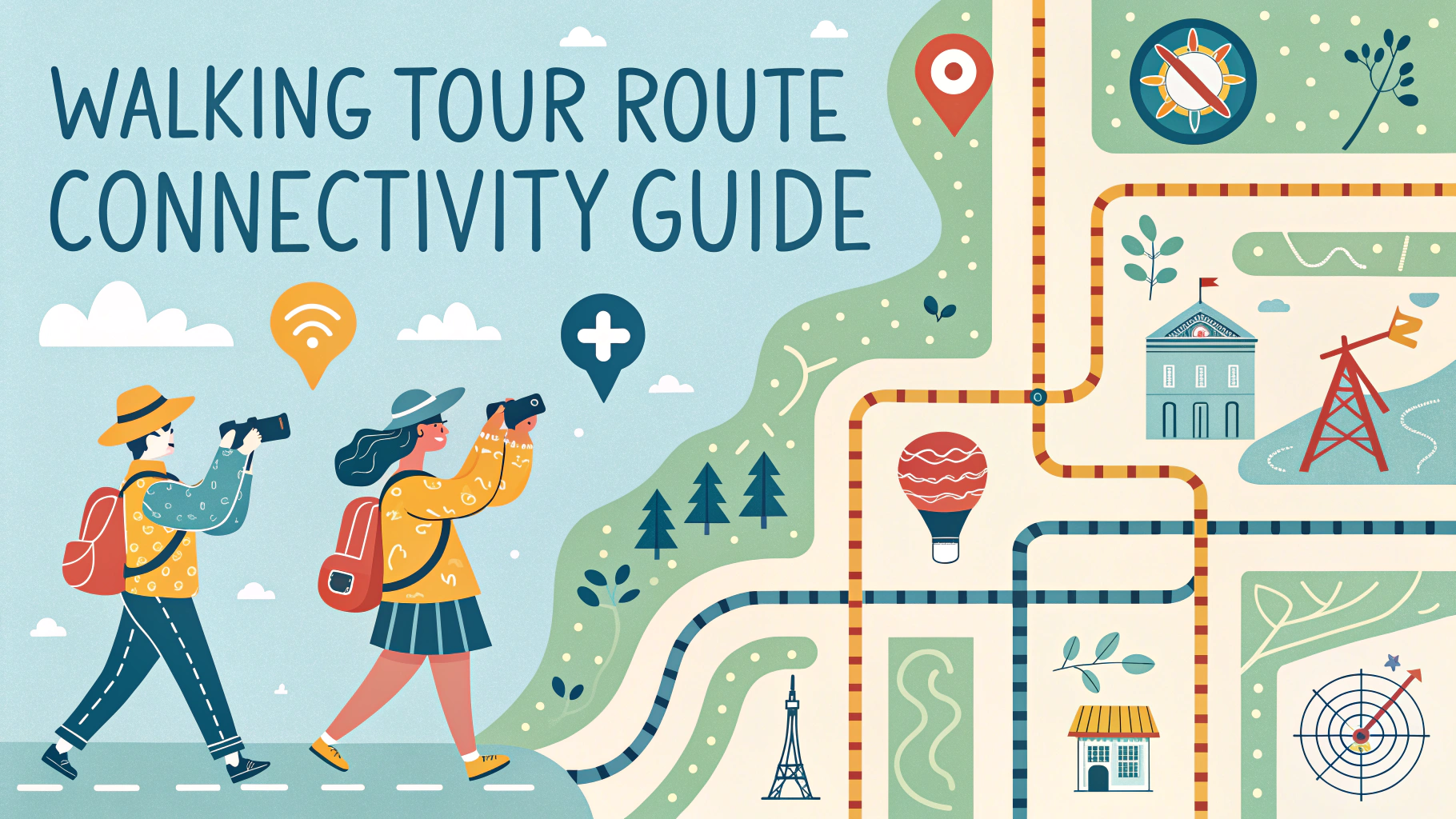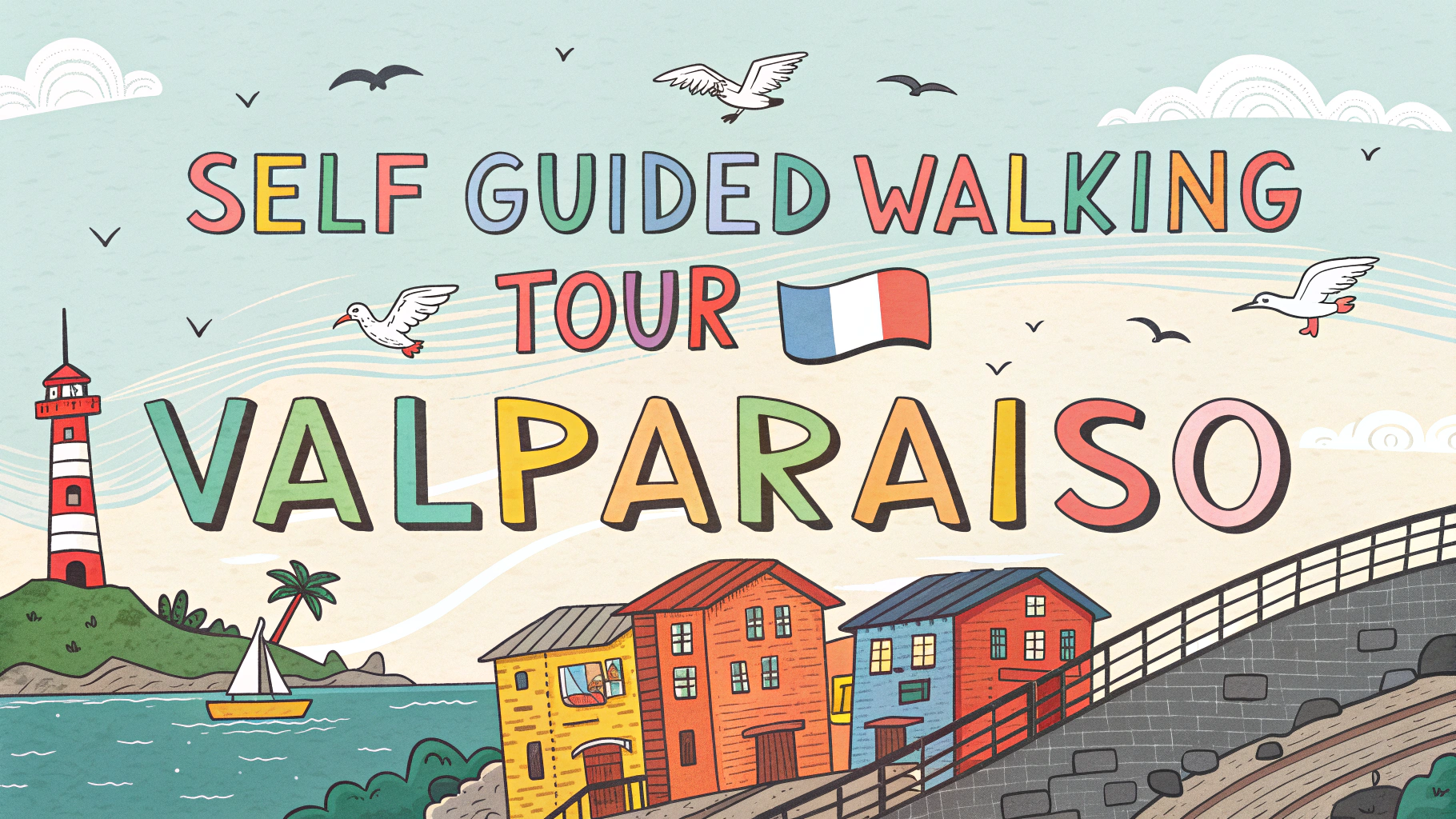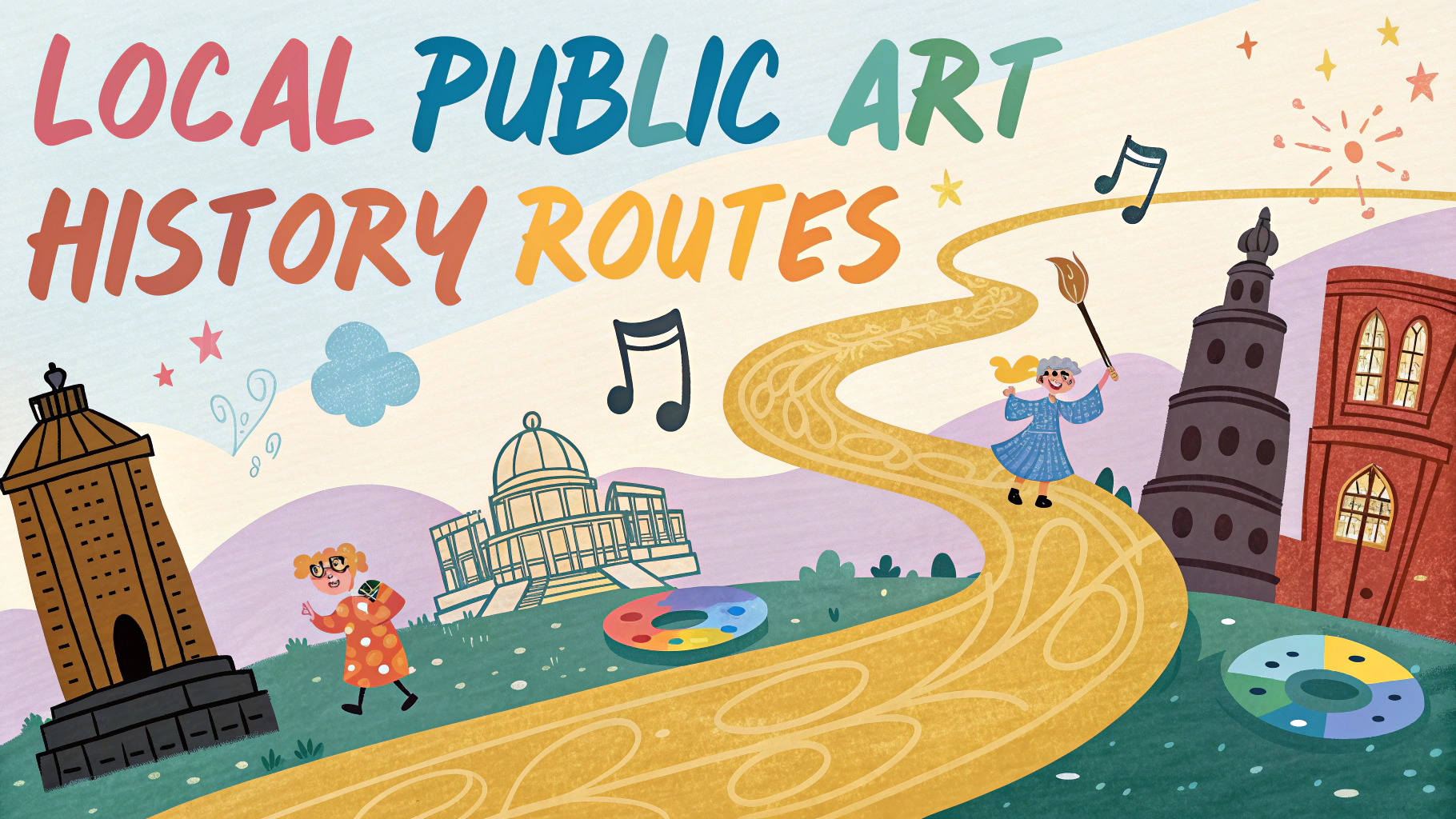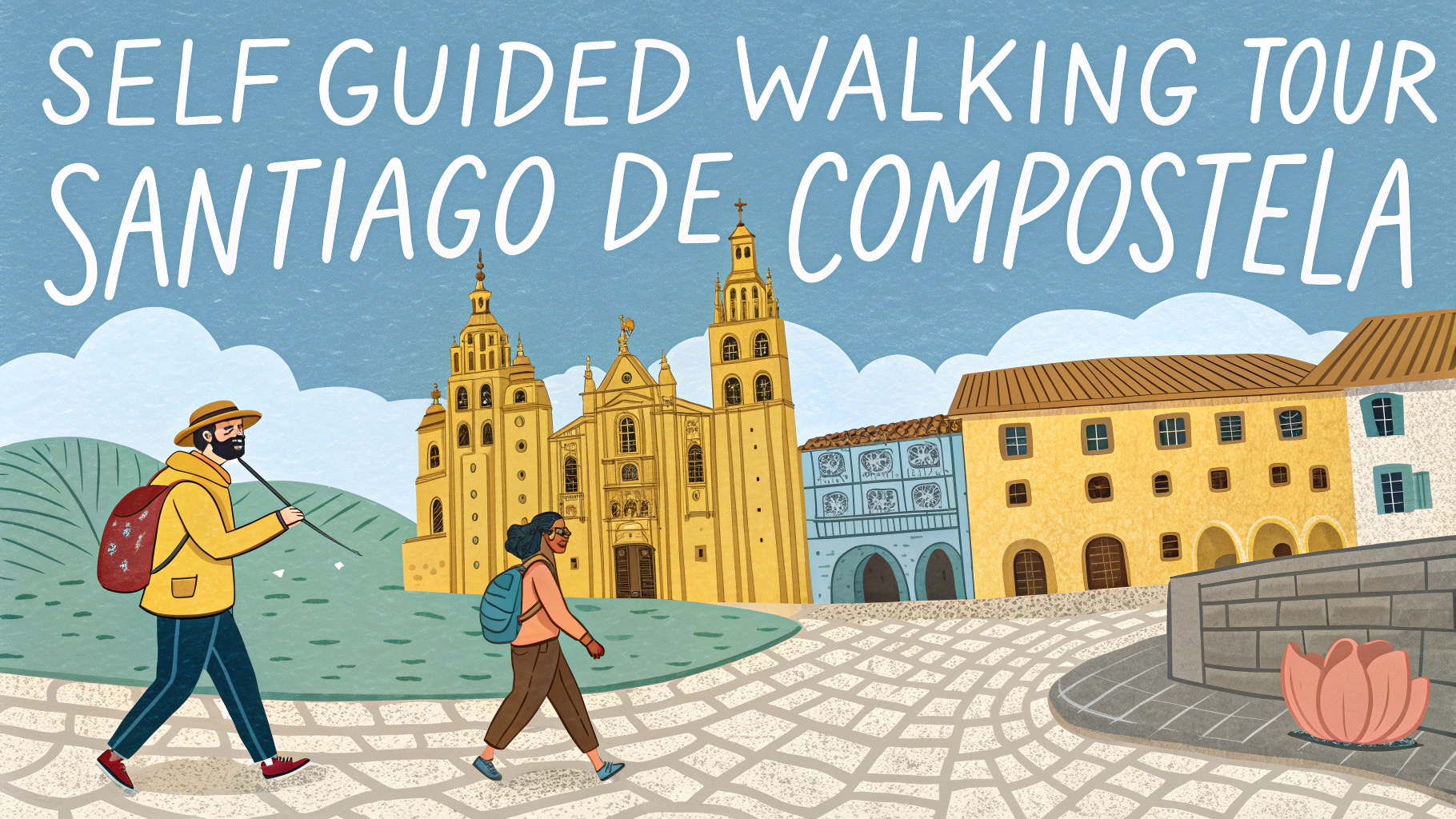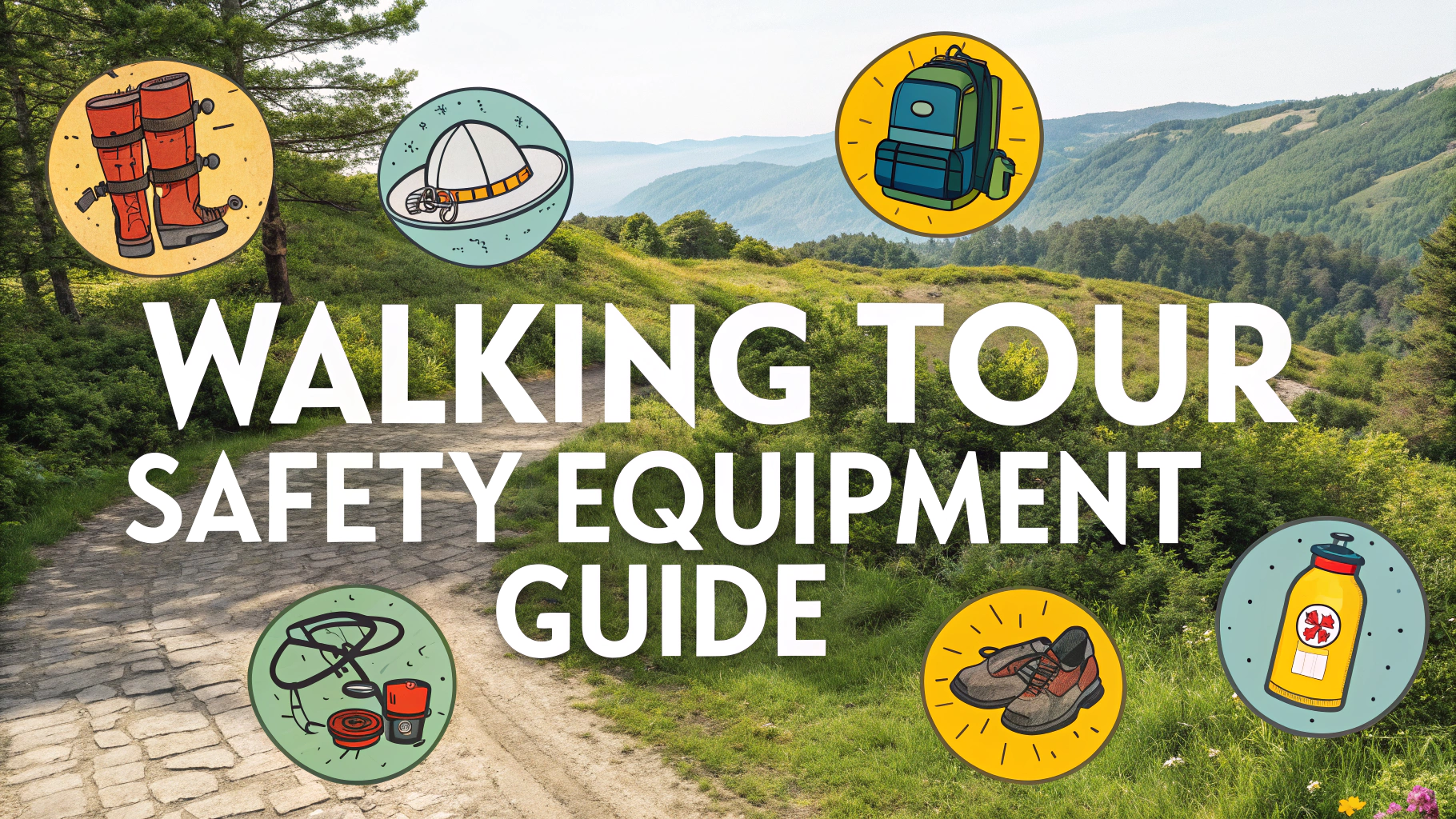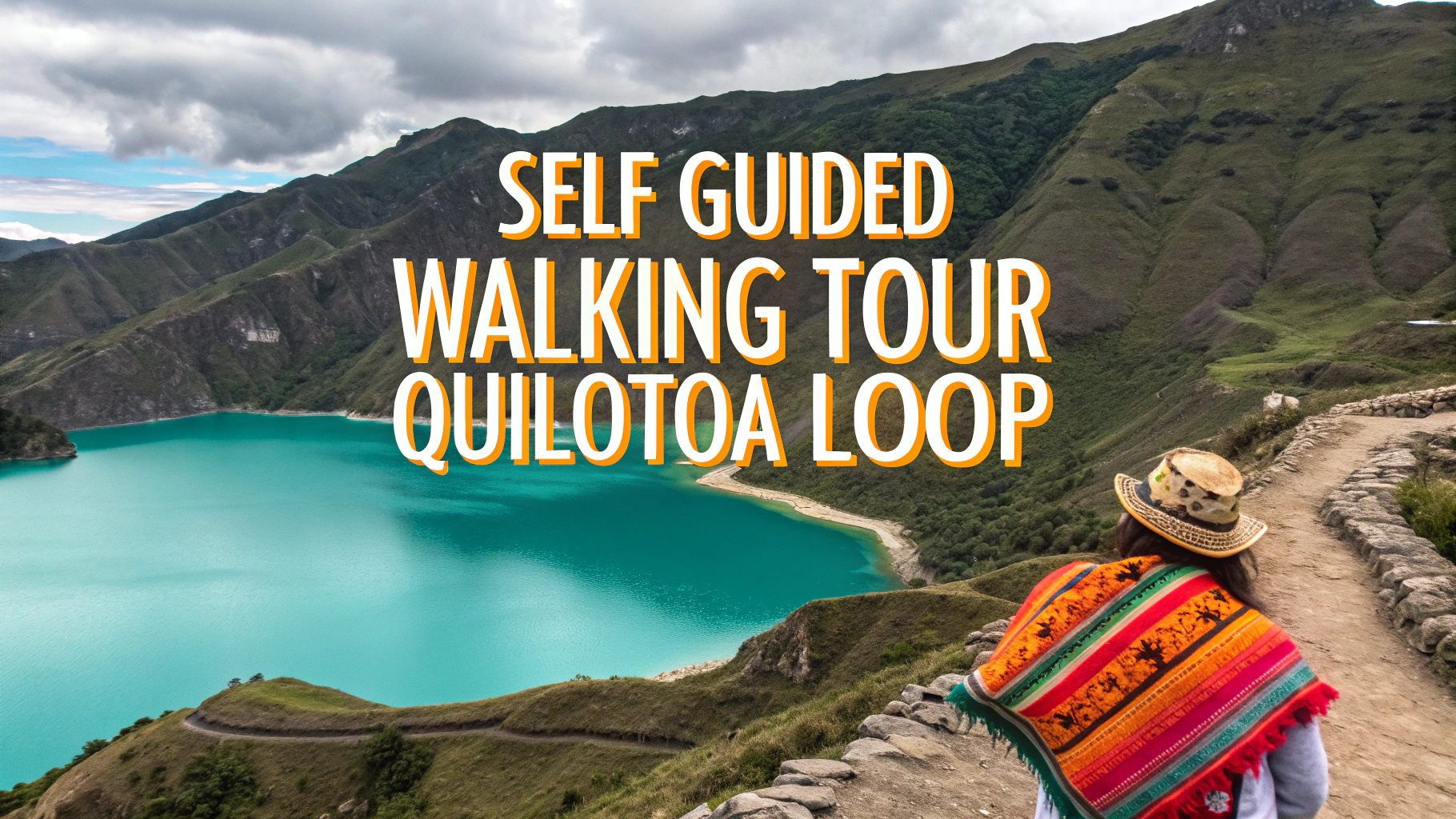The Salar de Uyuni, the world’s largest salt flat, stretches across 4,086 square miles of Bolivia’s Altiplano.
Planning Your Self-Guided Tour
The best time to visit is between July and October when the weather is dry and stable.
Getting There
- Fly into Uyuni Airport (UYU) from La Paz or Santa Cruz
- Take a bus from La Paz (8-10 hours)
- Book a train from Oruro to Uyuni (7 hours)
Essential Items to Pack
- Sunglasses and sunscreen (SPF 50+)
- Warm clothing (temperatures can drop below freezing)
- Water-resistant boots
- Camera with extra batteries
- GPS device or offline maps
- At least 2 liters of water per person
Recommended Route
Start your journey from the town of Uyuni, where you can rent a 4×4 vehicle from reliable agencies like Red Planet (+591 72888044) or Minuteman Tours (+591 68420095).
Key Stops
- Train Cemetery – Located 3km outside Uyuni
- Salt Manufacturing Plants – Learn about local salt production
- Colchani Village – Shop for salt crafts and textiles
- Playa Blanca Salt Hotel – First salt hotel in the world
- Incahuasi Island – Giant cacti and panoramic views
Photography Tips
- Early morning or late afternoon offer the best lighting
- Bring props for perspective photos
- Visit during rainy season (December-March) for mirror effect photos
Safety Considerations
- Altitude sickness is common (Uyuni sits at 11,995 feet above sea level)
- Take altitude medication 24 hours before arrival
- Download offline maps before departure
- Carry basic tools and spare tire
- Register your route with your accommodation
Emergency Contacts
| Police Uyuni | +591 62940475 |
| Tourist Police | +591 62940358 |
| Medical Center Uyuni | +591 62940302 |
Most self-guided tours take 6-8 hours to complete the main circuit.
Cost Breakdown
- 4×4 Vehicle Rental: $80-120 per day
- Entrance Fee: 30 BOB (approx. $4)
- Incahuasi Island Entry: 30 BOB
- Fuel: $30-40 for full circuit
Accommodation Options
- Palacio de Sal – Luxury salt hotel ($200-300/night)
- Hotel Jardines de Uyuni – Mid-range ($70-90/night)
- Hostal Tomato – Budget-friendly ($15-25/night)
Additional Activities
Stargazing
- Clear skies offer exceptional views of the Milky Way
- Best between April and October
- Book telescopic viewing sessions ($30-50)
Cultural Experiences
- Visit indigenous quinoa farmers
- Traditional llama herding demonstrations
- Local craft workshops in Colchani
What to Eat
- Quinoa soup – local specialty
- Llama steak with Andean herbs
- Salt-crust baked trout
- Coca tea for altitude adjustment
Conclusion
The Salar de Uyuni offers an otherworldly experience that rewards careful planning. While self-guided tours provide flexibility and cost savings, they require thorough preparation and safety consciousness. The salt flats’ unique landscape provides unparalleled photo opportunities and a chance to explore one of South America’s most remarkable natural wonders.
Remember to respect the delicate ecosystem, follow local guidelines, and maintain appropriate safety measures throughout your journey. With proper planning, your self-guided tour of the Salar de Uyuni can become an unforgettable adventure.
FAQs
- How much time do I need to explore Salar de Uyuni on foot?
A complete self-guided walking tour of the central area requires 1-2 days. However, to explore the entire salt flat would take several days as it spans over 10,582 square kilometers. - What’s the best time of year to visit Salar de Uyuni?
The dry season (April to November) offers stable walking conditions, while the rainy season (December to March) creates the famous mirror effect but makes walking more challenging. - What essential items should I pack for a self-guided walk?
Essential items include UV protection sunglasses, sunscreen (SPF 50+), a hat, plenty of water, sturdy waterproof boots, snacks, a GPS device, and protective lip balm. - Is it safe to walk in Salar de Uyuni without a guide?
While possible, it’s risky due to the lack of landmarks and potential for disorientation. It’s recommended to stay within sight of the salt hotel areas or join guided tours. - How do I protect my feet when walking on the salt flats?
Wear waterproof, sturdy boots with thick soles and bring gaiters to prevent salt from entering your shoes. The salt can be extremely harsh on footwear and skin. - What are the dangers of self-guided walking in the salt flats?
Main dangers include severe sun exposure, dehydration, disorientation due to the vast white landscape, and salt blindness if proper eye protection isn’t worn. - Can I drink water from the salt flats?
No, the water in the salt flats is not potable. Bring sufficient drinking water from town, calculating at least 3-4 liters per person per day. - What’s the average temperature during walks?
Daytime temperatures range from 21°C (70°F) in summer to 13°C (55°F) in winter, but temperatures can drop below freezing at night. - How far can I walk from the main entry points?
For safety, stay within 5-10 kilometers of entry points like Colchani or the salt hotels. Beyond this, you risk getting lost without proper navigation equipment. - Do I need permits for self-guided walking?
While no specific walking permits are required, you must pay the general entrance fee to the Salar de Uyuni area at official entry points.
